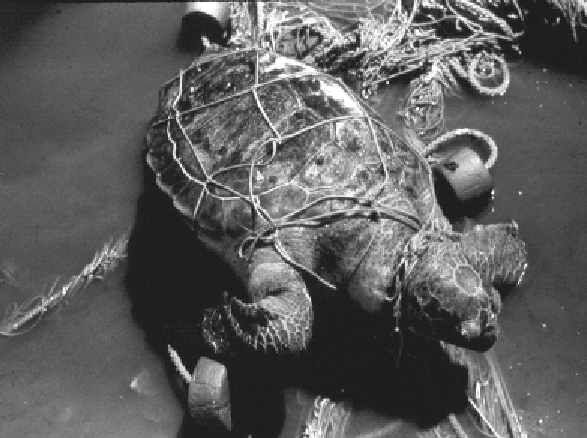Environmental Engineering Reference
In-Depth Information
When a large proportion of plastic inds its way into the ocean, it is often torn into
small particles, which pose a serious threat to barnacles, lugworms, marine ish, sea
turtles, seabirds and marine mammals, as they ingest the plastic fragments/microscopic
pieces of plastic, mistaking them for prey. This causes a serious threat to the food
chain, as the marine animals are fed upon by other animals, which eventually wind
up in human diets.
Given the durability of plastics and the disposable nature of many plastic items, this
type of contamination is likely to increase. At least 267 different species of seabirds,
turtles, seals, sea lions, whales and ish are known to have suffered from entanglement
(
Figure 5.2
) or ingestion of marine debris including plastic bags, plastic pellets and
fragments of plastics [3]. The biggest threat from ingestion occurs when it blocks
the digestive tract, or ills the stomach, resulting in malnutrition, starvation and
potentially death. Studies have shown that a high proportion (about 50−80%) of sea
turtles found dead are known to have ingested marine debris. For seabirds, 111 out
of 312 species are known to have ingested debris and it can affect a large percentage
of a population (up to 80%). Similarly out of 115 species of marine mammals,
26 species were found to have ingested marine debris. Furthermore, plastic debris is
also known to be passed to the chicks in regurgitated food from their parents [20].
Figure 5.2
A marine turtle entangled in the ishing net. Reproduced with
permission from the
Caribbean Environment Programme
, UNEP. ©2009, United
Nations Environment Programme

